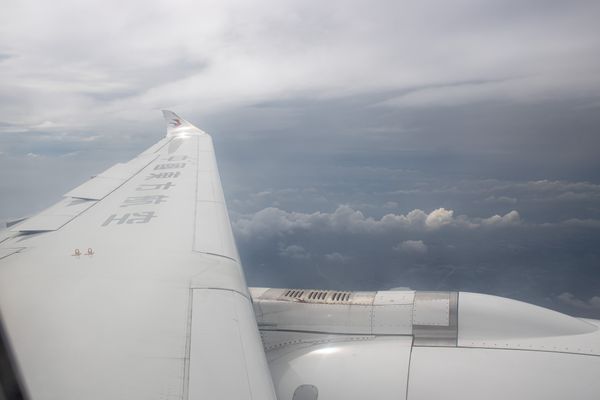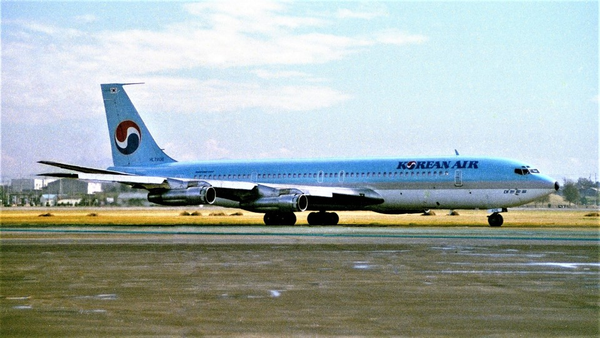Although tobacco use and smoking of tobacco based products have dropped in recent years, many areas of the world remain with cultures in which smoking is rampant. This, mixed with the increased use of e-cigarettes and other smokeless vapor tobacco products have raised concern amongst the general populous of when and were it is appropriate to smoke.
Although legislation prohibits smoking and vaping on most aircraft, there is still a common belief that there are some commercial or private carriers which allow smoking on their planes. However, is this true? What are the rules of smoking on an airplane.

A Brief History
Smoking on commercial airliners was for the longest time, quite a common site. Major airlines such as Condor and Iberia Air allowed smoking on their airplanes until the early 2000's.
Although the rules and regulations regarding smoking onboard have become more restrictive, ample signage and communication of when and where you can smoke on a plane remain on some older aircrafts today. This is despite smoking being strictly forbidden on most airlines.
All aircraft lavatories on commercial airliners are required to have an ashtray present, in the untimely event that someone decides to smoke on an aircraft (and subsequently violate regulations).
If this is to take place, regulatory bodies such as the United States Federal Aviation Administration (FAA) can impose legal action, as well as a minimum USD 4,000 fine. Instances of people smoking on commercial flights are fairly common, with those who smoke on flights punished accordingly.
So why was smoking was allowed on aircrafts for over 50 years?
The answer is a bit complicated. The science and health related facts of long-term tobacco use are still being discovered. However many studies have found that smoking has extremely negative side-effects to the user. It has been found that second hand smoke inhalation (from being surrounded by smokers actively smoking) is equally as bad.
In a pressurized air chamber such as the fuselage of an airplane, recycled air is contained and recycled throughout, leading to smoke being consumed by all passengers. Indoor smoking at airports has been banned for similar reasons.
When it comes to a general smoking ban, insurance agencies for airlines and airplanes both denounce the use of smoking, as allowing it would result in increased liability. Smoking also presents the risk of a fire onboard, as improper disposal of lit cigarette buds could cause an onboard fire. The use of e-cigarettes is a bit more complicated.
In 2015, the FAA prohibited the use of e-cigarettes, and placed them in the same category as smoke-based tobacco products. However, legislation classifying their use as smoke-less products opens a grey area on many international carriers. The batteries used for these products cannot be placed into checked luggage, as they are prone to corrosion or eruption in unpressurized air.
Batteries for vapes and e-cigarettes are the most common items that are taken out of checked baggage in the US.
If one researches whether some airlines allow smoking onboard, some older sources identify that Cubana Airlines, Air Algeria, and Iran Air allow smoking. These sources have been debunked on multiple travel blogs, as most people have not experienced smoking on board.
Iran Air has released a statement prohibiting smoking on board. It is believed that the lack of transparency for “smoking on board” indicated that they allow it, but the reality is that the most likely has legacy information posted on its websites and information forms, and that the airlines needs to release more information.
The legality of smoking on private aircraft charters is also tricky to pinpoint. Although all aircrafts and insurance companies denounce the use of smoke-based products on private flights, enforcement can only happen if regulators are informed.
It is believed that although it is prohibited, some people may smoke and simply pay a fine isued by regulators if they are caught.
No "Mate's Rates" in the Sky as Qantas Bans All Staff (Including CEO) From New A350 First Class » What You Don't Know About Airport Operations That Go Overnight » GTF Storage Crisis Deepens: 835 Aircraft Grounded as Pratt & Whitney Recalls Surge Post-Mid-Year »
Comments (0)
Add Your Comment
SHARE
TAGS
INFORMATIONAL Smoking Informational News Iran Air 2000s airports planes onboardRECENTLY PUBLISHED
 VIDEO: What It's Like Onboard China's COMAC C919
We flew onboard China Eastern's COMAC C919 to experience China's homegrown narrow-body up close. From seat comfort to cabin layout to noise levels to tech: how does it really compare with the Boeing 737 and Airbus A320? This review puts all three workhorses under the same spotlight.
TRIP REPORTS
READ MORE »
VIDEO: What It's Like Onboard China's COMAC C919
We flew onboard China Eastern's COMAC C919 to experience China's homegrown narrow-body up close. From seat comfort to cabin layout to noise levels to tech: how does it really compare with the Boeing 737 and Airbus A320? This review puts all three workhorses under the same spotlight.
TRIP REPORTS
READ MORE »
 KAL858: The North Korean Bombing that Shocked the World
Among the 99 passengers boarding Korean Air Flight 858 on November 29, 1987, few could imagine their journey would end as one of aviation's darkest mysteries.
STORIES
READ MORE »
KAL858: The North Korean Bombing that Shocked the World
Among the 99 passengers boarding Korean Air Flight 858 on November 29, 1987, few could imagine their journey would end as one of aviation's darkest mysteries.
STORIES
READ MORE »
 Ghost Networks: The Rise, Fall, and Revival of Fifth-Freedom Flights
Fifth-freedom flights — routes where an airline flies between two countries outside its home base — have always lived in aviation's twilight zone. We chart their rise, their near-disappearance, and the surprising markets where they still thrive today. Then we take you on board a special Seoul-Tokyo fifth-freedom flight to show how the experience stacks up against a typical regional carrier.
TRIP REPORTS
READ MORE »
Ghost Networks: The Rise, Fall, and Revival of Fifth-Freedom Flights
Fifth-freedom flights — routes where an airline flies between two countries outside its home base — have always lived in aviation's twilight zone. We chart their rise, their near-disappearance, and the surprising markets where they still thrive today. Then we take you on board a special Seoul-Tokyo fifth-freedom flight to show how the experience stacks up against a typical regional carrier.
TRIP REPORTS
READ MORE »



